Volume 24 Issue 2, Spring 2019
by Anne Owen, Audubon at Home Ambassador
In the late summer of 2016, within four weeks of moving to their new property, Abby and Marc Seeley asked Audubon at Home (AAH) for a visit to their 11 acres in rural Western Loudoun. The acreage is mostly wooded, but even so, it took Marc more than six hours to mow the area given over to lawn grass! Abby has gardened for wildlife for many years, and the couple was looking for ideas that would make the property more manageable, and also benefit the wildlife that they both so very much enjoy.
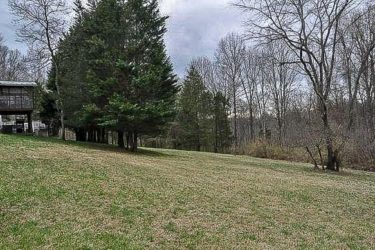
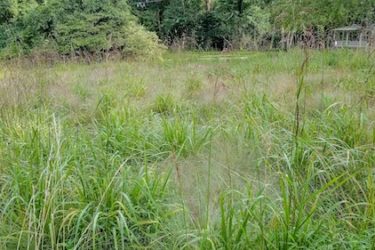
In the course of walking the property, the AAH team noticed an area of grassland that Marc had left standing alongside their access road and realized that amongst the non-native fescue grass were some exciting native grasses, including Purpletop. That sparked a discussion about the possibility of developing this area into a meadow. Abby and Marc loved the idea. Over the next few weeks, they continued to work with the lead AAH ambassador, Ann Garvey, to come up with a plan to slowly “turn over” this area to meadow by gradually eliminating the non-native plants they found, like Multiflora Rose, and steadily increasing the diversity by adding both plants and seeds of native plants that are important to Loudoun’s native pollinators. Pulling unwanted plants disturbs the soil and risks stimulating more invasives, so Abby snips the invaders close to the ground, then carefully spritzes the cut stem with RoundUp, avoiding any insects or insect-attracting flora.
Ann also suggested that they might qualify for assistance from the Virginia Soil and Water Conservation District’s Virginia Conservation Assistance Program (VCAP). It turned out that the proposed meadow location did not have the right characteristics for VCAP support, but another area of their property would make an ideal candidate. Behind the house was a large, sloping, manicured lawn, in full sun and leading down to a drainage that joins the North Fork of Goose Creek. If they were prepared to turn that over to meadow, then they would qualify for a VCAP grant toward the costs. However, the “slow turnover” approach was going to be too slow for this second meadow — they would need to treat the whole area with weed killer to kill the lawn grass, then seed to get the transformation off to a much faster start. They also had to commit to maintain the new meadow for 10 years. After a lot of self-education, online research, and planning, Abby came up with a mix of native grasses and plants that would form the basis of a balanced ecosystem, providing living space and food for wildlife throughout the seasons. After completion of a very extensive application, they were finally notified of a grant.
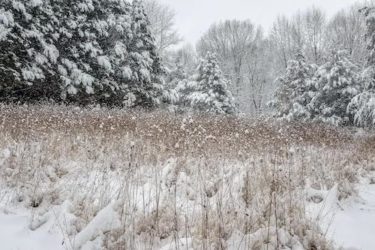

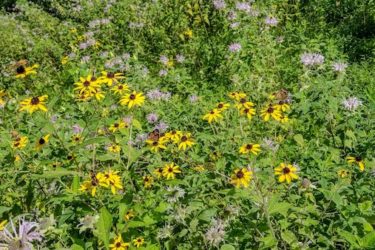
All photos by Abby Seely
That’s when the hard work really started, as they chose to do the labor themselves and maximize the amount of seed they could buy. Abby describes the process of hand-casting 75 ounces of forb (flowering perennial) seed and 26 ounces of mixed grass as a very long walk, but says they find everything they do in the meadow highly therapeutic. They completed this phase of the project by late spring 2017 and excitedly waited to see the fruits of their labor.
By early summer Abby began to notice the new plants emerging. Then, to her horror, the whole area was submerged under Japanese Stilt Grass and she was devastated, worrying about what had “gone wrong.” Meanwhile, the “slow turnover” meadow was showing progress with the elimination of some old apple trees and the addition of Broomsedge, Indian Grass, and Purple Love Grass. These grasses are crucial to the life of many butterflies, and the seeds immediately attracted songbirds and Wild Turkeys.
Abby and Marc decided to hang tough and left their two meadows standing through the winter of 2017 before mowing in the spring. After being away for a week of vacation in early summer, they came home to find that the new meadow had “exploded” into life. A carpet of native flowers was alive with a cloud of nectaring insects. Marc commented that there was so much activity he felt as if he could see the air moving. They learned that many native plant seeds can take two or even three years to flower and crowd out the Stilt Grass — nothing had “gone wrong.” As the summer progressed, they saw countless butterflies, moths, native bees, and even dragonflies, as well as toads, box turtles, opossum, fox, and more. The Capital Naturalist Facebook Group turned out to be a wonderful community to help identify new arrivals and understand more about how the ecosystem was developing.
Abby walks her meadows every day and keeps a meticulous journal of what she sees. She has noticed far more birds, no doubt attracted by the insect buffet, and they now regularly also see a pair of Cooper’s Hawks hunting. They have noticed a reduction in undesirable critters like ticks and mosquitoes, probably as a result of creating a more balanced ecosystem. Once again in 2018, they left the meadows standing through the winter and were rewarded with flocks of Dark-eyed Juncos and White-throated Sparrows foraging among the dried-out stems. Those same stems are also providing important over-wintering quarters for their insect population.
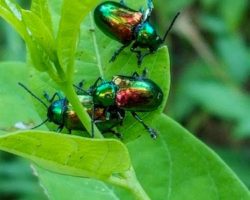
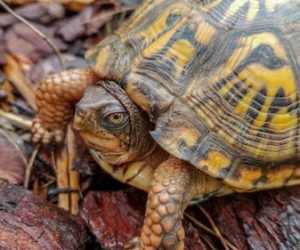
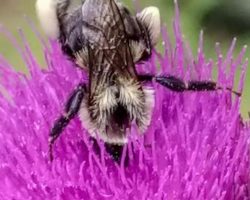
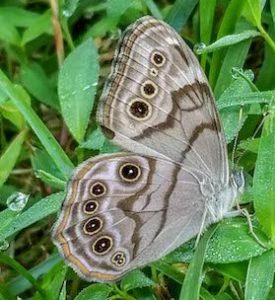
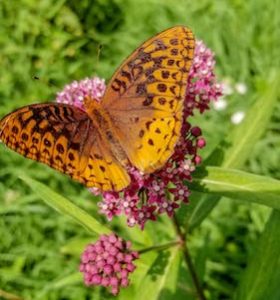
All photos by Abby Seely
Abby reflects that having a thriving ecosystem means tolerating critters that she and Marc find unappealing, or even scary — for example, snakes, possums, spiders, even bees. However, they know that each of these native creatures has a specific niche, and without them their meadows would not be complete. In the end, Abby is always guided by the concept that with the right balance of native plants, the entire ecosystem will come into balance, provided that you have the patience to let nature take its course.
Abby and Marc speak highly of the support they received from Audubon at Home. At her previous suburban home in Springfield, Va., AAH helped support Abby in gardening for wildlife in a neighborhood devoted to a more traditional approach to yard maintenance. Here in Loudoun, Abby and Marc feel that they have truly embarked on their vision of creating wildlife habitat — and yes, they have fulfilled their goal of reducing the maintenance on their property. The meadow only needs one mowing per year, rather than weekly for a lawn, and they do just two sweeps for invasives.
If you are interested in creating a wildlife habitat on your property, please go to this link to get more information and submit an Application Form to request a site visit, click here.
You can find out more about Virginia’s Soil and Water Conservation Districts VCAP program by clicking here.

